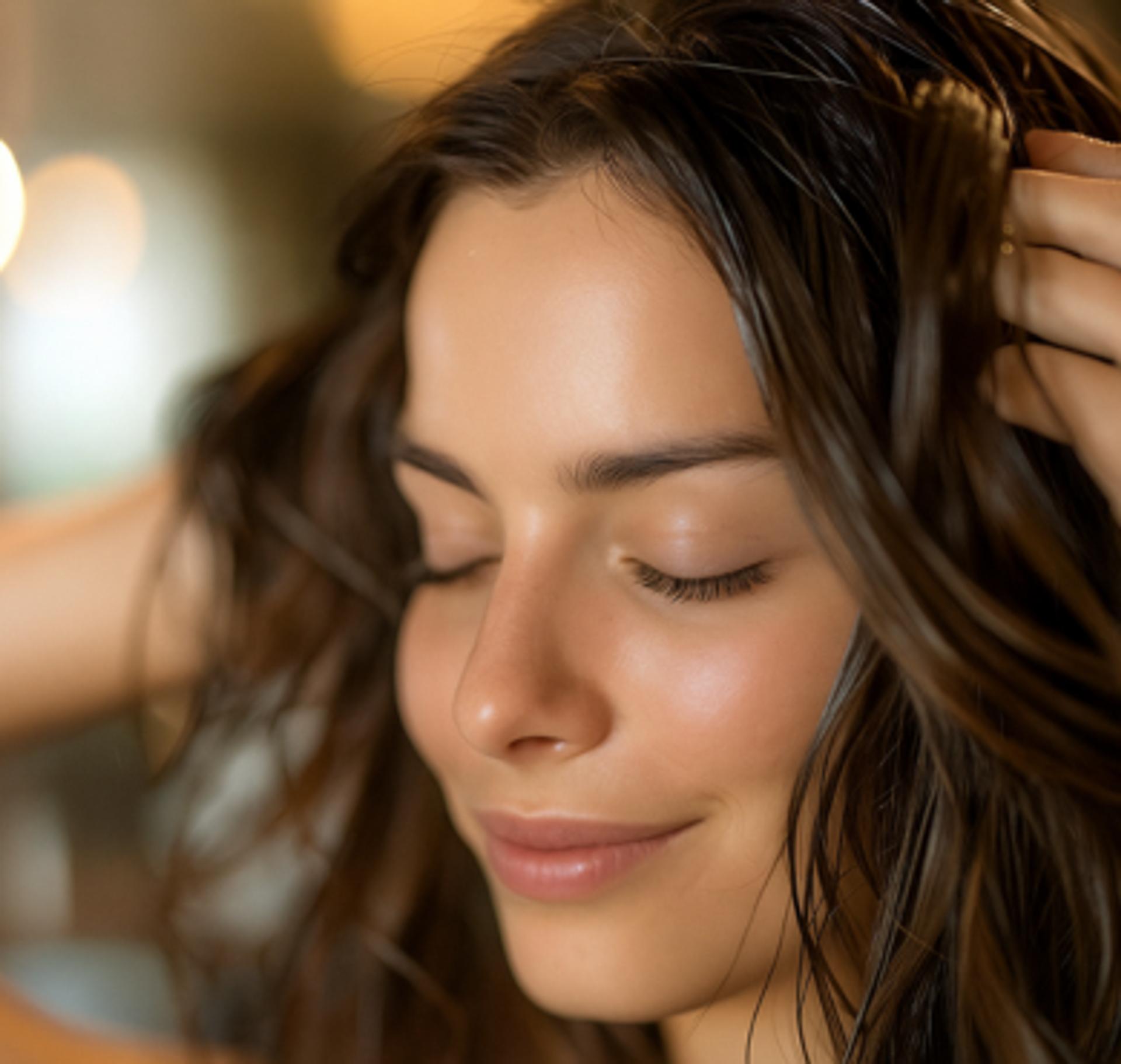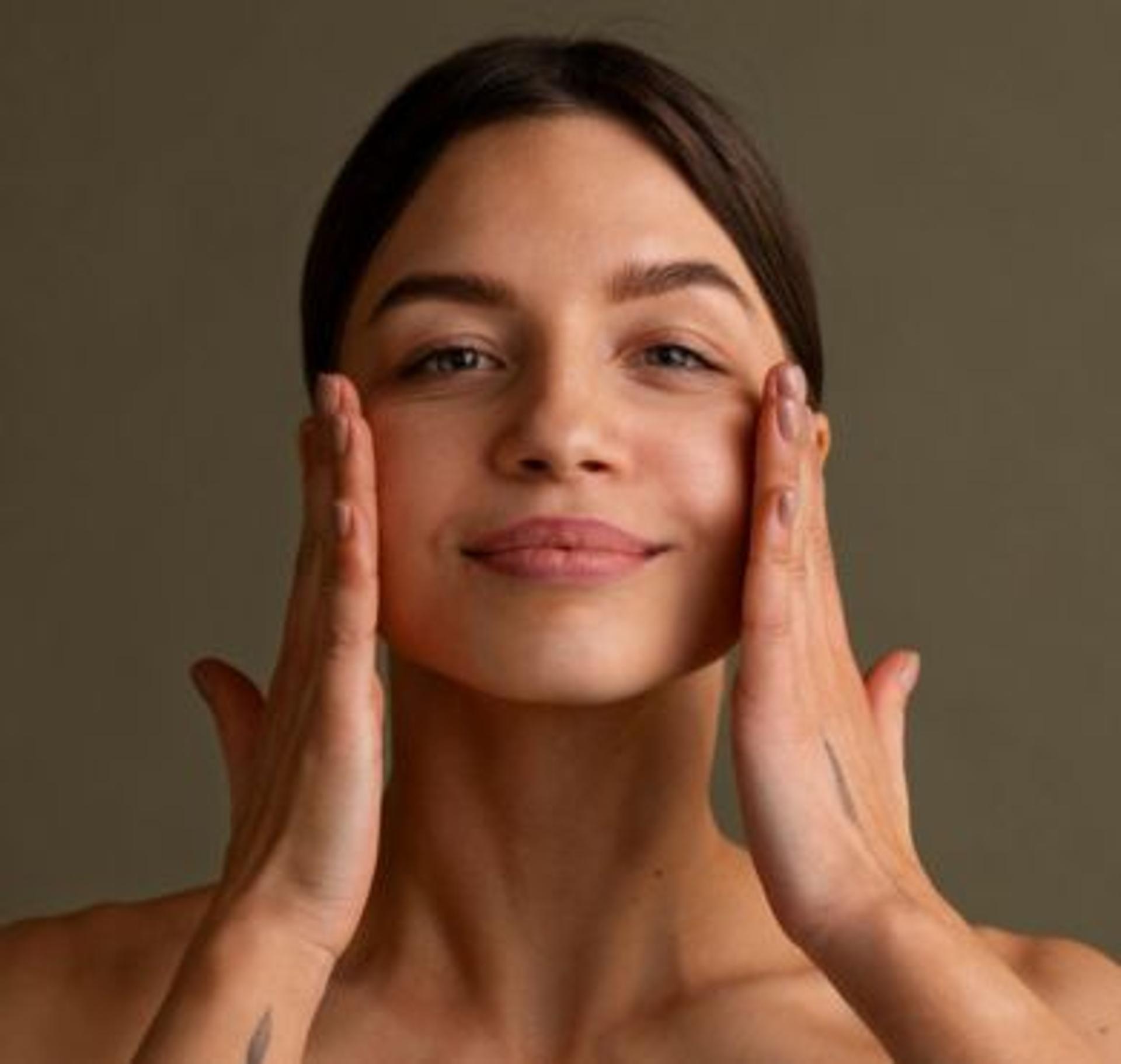
Beyond the Drop
How to Oil Your Hair Like a Pro
By Nat Habit
Hair oiling is much more than a beauty ritual - it’s an ancient Ayurvedic practice deeply rooted in holistic wellness, designed to nourish not just your hair but your entire scalp and nervous system. Modern science validates many of these time-honoured techniques, revealing how the right method of oiling can stimulate hair growth, strengthen strands, and even promote mental calmness. Here’s a detailed look at how to oil your hair effectively, blending tradition and science for the best results.
Timing Matters
Why Evening or Night Oiling Works Best
The timing of hair oil application significantly impacts its effectiveness. Ayurveda recommends oiling in the evening or night because, physiologically, the scalp’s permeability increases during rest periods, allowing better absorption of nutrients. Scientific studies support this, showing that during sleep, the skin’s barrier function relaxes slightly, facilitating deeper penetration of topical agents.
Moreover, overnight oiling allows hair follicles to receive continuous nourishment without interruption, helping repair damage caused by environmental stressors throughout the day. If night oiling isn’t possible, early morning oiling on an empty stomach is another effective option, stimulating scalp circulation and energizing hair follicles.
The Ideal Posture
Comfort Supports Circulation and Relaxation

How you position yourself during oiling isn’t just about comfort—it also affects circulation and the quality of your massage. Sitting upright with a straight spine—whether cross-legged on the floor or seated on a chair—helps keep your neck and shoulders relaxed, reducing tension and encouraging blood flow to the scalp. This improved circulation delivers oxygen and essential nutrients to hair follicles, supporting hair growth and strength.
Lying down with a towel beneath your head is perfect for overnight oiling, minimizing strain and preventing oil from dripping. This restful posture complements the calming effects of the ritual, fostering a sense of relaxation that Ayurveda links directly to hair health.
Warming the Oil
Unlocking Deep Absorption
Warming your oil before application is a small step with big benefits. Heat slightly opens the hair cuticles and dilates scalp pores, creating a gateway for the bioactive compounds in the oil and herbs to penetrate deeper. Studies on skin absorption confirm that warm oils allow lipophilic (oil-soluble) nutrients to pass more efficiently through the scalp’s lipid layers.
Ayurveda concurs that warmed oil is more “sattvic” (pure and nourishing), making it a powerful medium to balance the doshas and energize the scalp.
The Art of Scalp Massage
Stimulating Growth and Calm
Massage is the core of the oiling ritual. Using your fingertips—not nails—apply the oil in small, circular motions across your scalp. This movement stimulates capillary blood flow, increasing oxygenation and nutrient delivery to hair follicles. Improved circulation also accelerates the removal of metabolic waste, reducing scalp inflammation and promoting a healthier environment for hair growth.
The gentle pressure activates mechanoreceptors, triggering the release of endorphins and promoting relaxation—benefits well-documented by neuroscience research. Ayurveda adds that stimulating specific marma points—energy centers like the crown (Adhipati) and temples—can harmonize the body’s vital energies, reduce stress, and support hair vitality.
After circular massage, incorporate gentle tapping using your fingertips across the scalp. This enhances lymphatic drainage, which helps detoxify and maintain scalp health.
Extending the Care
Nourishing the Hair Strands

Once the scalp is massaged, spread the oil evenly along the hair shafts using long, smooth strokes from root to tip. This action seals the hair cuticles, locking in moisture and protecting strands from breakage and environmental damage. Hair shaft lubrication reduces friction during styling and brushing, preventing mechanical damage and split ends.
Post-Oiling Practices
Heat and Time Amplify Benefits
Wrapping your hair in a warm towel or covering with a shower cap creates a gentle greenhouse effect, trapping heat and moisture. This warmth keeps hair cuticles slightly open, allowing the herbal actives and nutrients to infuse deeper into the scalp and hair follicles over time.
Scientific studies suggest that heat facilitates transdermal absorption by increasing skin permeability and promoting circulation—key for delivering the complex herbal compounds in the oil to where they can stimulate follicular cells.
Aim to leave the oil on for at least 30 minutes, or overnight if possible, for maximum effect. Washing with lukewarm water and a gentle, sulfate-free shampoo ensures the oil is rinsed without stripping essential moisture.
Ayurveda’s Herbal Enhancements
Combining Powders and Steam

To deepen nourishment, Ayurveda recommends combining oils with herbs. These herbs contain phytochemicals that combat scalp inflammation, stimulate hair growth, and reduce dandruff. The slow infusion process releases potent bioactive compounds which act synergistically with the carrier oil.
Following oil application with a gentle herbal steam treatment opens pores further, enhances circulation, and promotes relaxation. Steaming with herbs like neem or tulsi adds antibacterial and antifungal benefits, promoting a healthy scalp microbiome critical for strong hair growth.
The Science-Behind Hair Oiling
- Increased circulation from massage delivers nutrients and oxygen, essential for follicle health.
- Heat from warming and post-massage steaming opens cuticles and pores, enabling deeper absorption.
- Relaxation from rhythmic massage reduces cortisol (stress hormone), which can otherwise impair hair growth.
- Phytochemicals in herbs nourish and protect the scalp and hair shafts, preventing damage and supporting regeneration.
Final Thought
Hair oiling is a beautiful union of science and Ayurveda—a holistic ritual that nourishes your hair, calms your mind, and restores balance. By honoring these techniques, you create more than just healthy hair—you create a sanctuary of self-care that revitalizes you from the roots up.
DASABUTI Nourishment by Nat Habit

We understand that oiling hair isn’t just a routine - it’s a ritual. And while doing it is essential, doing it with right oil matters even more. Because if the oil lacks true nourishment, the results may never live up to the effort.
That’s why, while you focus on making sure every drop reaches roots, we focus on ensuring every drop is deeply nutritious—with Dasabuti. This isn’t just a blend of herbs, extracts, or mineral oils. It’s a meticulously crafted elixir—a potent, nourishing potion designed to awaken millions of hair cells.
Infused with the power of 15+ time-honoured herbs, each ingredient is slowly steeped for hours in cold-pressed oils to extract the most bioactive compounds. These compounds don’t just sit on the surface—they penetrate deeper into the scalp, reviving follicular function, strengthening the hair shaft, and restoring natural shine, vitality, and youthful bounce.
Dasabuti isn’t just a hair oil. It’s your partner in the lifelong journey of bringing life back to hair—drop by drop, root to tip.
(Watch how Dasabuti Oil is prepared in our Ayurvedic Kitchen to nourish your hair follicles.)
Learn more



